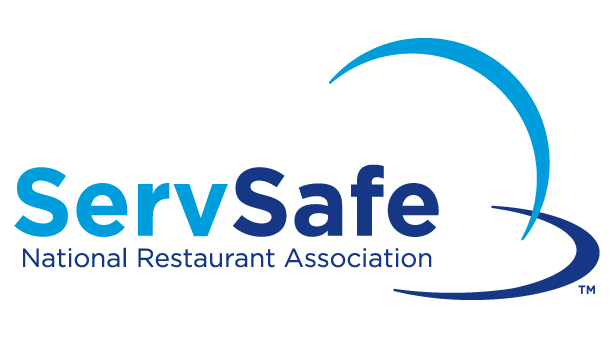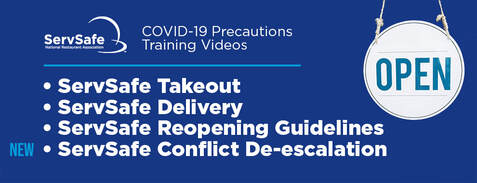Comprehensive Food Handlers Educating for Health and Safety
In today's swiftly developing food service landscape, comprehensive food handlers training has actually emerged as an important component for making certain health and security. By instilling necessary techniques associated with hand hygiene, food storage, and hygiene, this training not just minimizes the threat of foodborne diseases yet additionally reinforces compliance with governing criteria. The implications of such training prolong past simple conformity; they touch upon public health and wellness and consumer trust fund. Yet, the effectiveness of these training programs can vary substantially. What elements truly identify their success in promoting a society of security?
Significance of Food Safety And Security Training

In addition, food safety and security training aids to ensure that employees understand present regulations and standards, which are crucial for preserving operational licenses and avoiding expensive penalties. Regular training sessions additionally function as a system for strengthening finest techniques, thereby decreasing the probability of human error, which frequently offers as a leading reason for food contamination.
Additionally, purchasing food safety and security training can enhance a facility's track record, as consumers significantly prioritize eating experiences that reflect high security standards. Such proactive procedures not just protect consumers however likewise add to the long-lasting success of food businesses. In recap, thorough food security training is an indispensable aspect of food service operations, straight influencing both public health and wellness and business sustainability.
Trick Concepts of Hygiene
Maintaining high standards of hygiene is vital in any kind of food taking care of setting to stop contamination and guarantee the security of consumers. The essential principles of hygiene encompass a number of vital methods that food trainers have to consistently apply.
First, hand health is paramount; food trainers need to wash their hands thoroughly with soap and water prior to and after handling food, along with after utilizing the bathroom or touching any type of potentially contaminated surface areas. Secondly, devices and surfaces have to be routinely cleaned up and sanitized to remove microorganisms. This includes tools, cutting boards, and countertops, which should be kept in a clean problem.


Proper food storage space is additionally crucial; raw foods ought to be kept individually from cooked or ready-to-eat things to avoid cross-contamination. servsafe manager. Furthermore, keeping proper temperature level controls is crucial; disposable things ought to be maintained at risk-free temperatures to hinder bacterial growth
Lastly, personal hygiene can not be forgotten. Food trainers must wear tidy garments, use hair restrictions, and avoid functioning when ill. By sticking to these crucial principles of health, food trainers can substantially reduce the danger of foodborne illnesses and promote a safer dining experience for all consumers.
Common Foodborne Health Problems
Although many foodborne ailments can be prevented through appropriate health and secure food managing practices, they remain a considerable public health and wellness concern. Foodborne microorganisms can bring about a range of ailments, varying from moderate stomach distress to extreme complications and even death.
Usual foodborne illnesses include salmonellosis, triggered by Salmonella microorganisms, frequently linked to undercooked chicken and eggs. Another prevalent disease is listeriosis, connected with unpasteurized milk products and ready-to-eat meats, which can be specifically hazardous you can check here for expecting ladies and immunocompromised individuals. Norovirus, frequently contracted from infected food or surface areas, is recognized for its quick spread and ability to cause outbreaks in communal settings.
Escherichia coli (E. coli) infection, notably connected with undercooked ground beef and contaminated produce, can result in serious abdominal cramps and kidney failure in some situations. Furthermore, Clostridium perfringens, frequently located in large amounts of food that are poorly kept, can cause food poisoning with signs and symptoms showing up soon after consumption.
Understanding these ailments is crucial for food trainers, as recognition can considerably reduce the risk of contamination and shield public health and wellness. Correct education and learning and training are important components in combating foodborne conditions.
Best Practices for Food Handling
Effective food dealing with practices are crucial in avoiding the spread of foodborne illnesses. Appropriate hand health is crucial; food handlers must clean their hands thoroughly with soap and water before and after handling food, specifically raw meat or fowl. This simple action dramatically decreases the threat of cross-contamination
Secondly, preserving suitable food storage space temperature levels is important. Subject to spoiling items need to be saved at or listed below 40 ° F(4 ° C) to hinder bacterial development. Furthermore, prepared foods should be kept over 140 ° F(60 ° C) till served.
Third, making certain cleanliness of surface areas and tools is important. Frequently sanitize kitchen counters, reducing boards, and utensils, specifically after preparing raw foods. Usage separate cutting boards for ready-to-eat and raw foods to even more lessen contamination risks.
Furthermore, when preparing food, it is essential to comply with the principle of "initial in, initially out" (FIFO) to take care of supply properly and reduce wasting. Always read and stick to food item labels for secure cooking temperature levels and handling instructions. By executing these finest techniques, food handlers can considerably boost food security and shield public health.
Carrying Out a Safety Culture
Producing a security culture within a food managing hop over to here setting is important for promoting a commitment to food safety amongst all personnel. This culture emphasizes the significance of food safety and security as a common responsibility, urging employees to prioritize hygiene techniques continually.
To carry out a safety culture, organizations must begin by giving thorough training that addresses food handling methods, possible threats, and the significance of personal hygiene. Training sessions ought to be interactive and tailored to the certain roles of employee, making certain importance and interaction.
Furthermore, leadership plays a vital function in establishing this culture. Administration needs to design secure techniques and interact the relevance of food security frequently. Recognizing and rewarding workers who copyright safety criteria can further enhance these behaviors.
In addition, open communication networks must be established, enabling staff to report safety concerns without worry of effect. Routine safety audits and comments sessions can help identify areas for enhancement and reinforce accountability.
Eventually, growing a security culture not just improves conformity with food security laws but additionally shields public health, cultivates employee spirits, and adds to the overall success of the food managing establishment.
Verdict
To conclude, thorough food handlers training plays a pivotal role in promoting health and safety within food service establishments. By gearing up employees with essential knowledge regarding food safety and security concepts, common foodborne diseases, and finest methods for handling food, such training substantially decreases health risks. Additionally, promoting a culture of security improves the establishment's online reputation and straightens with customer assumptions for high security standards, inevitably adding to public wellness defense and the overall success of the food service market.
In today's swiftly progressing food solution landscape, detailed food handlers training has actually emerged as an important element for guaranteeing health and safety.Food security training is critical for review maintaining high criteria in food handling and prep work, with studies showing that proper training can decrease foodborne diseases by up to 30%. In summary, thorough food safety and security training is a vital aspect of food solution operations, directly influencing both public health and company sustainability.

Comments on “Quick Tips for Effectively Finishing Your ServSafe Food Handler Course Online”